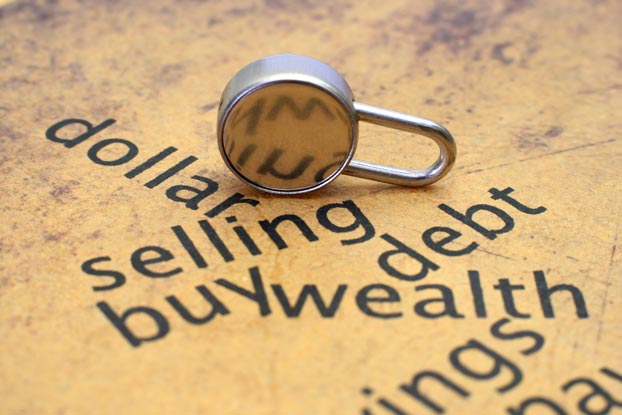Income inequality is worsening in Australia, according to comprehensive new research that finds renters, pensioners and students are feeling the pinch while high earners get pay rises.
ME bank’s twice-yearly survey of 1500 households, conducted in June and published on Monday, revealed bigger gaps in income, housing and financial worries across the nation.
In the last financial year, the overwhelming majority of Australian households (68 per cent) saw their incomes stagnate or fall. Only 32 per cent got pay rises – the lowest in three years.
Income inequality was apparent.
Almost half (45 per cent) of households earning less than $40,000 said their incomes went backwards, while almost half (46 per cent) of households on at least $100,000 saw pay rises. These high earners were least likely (17 per cent) to report income cuts.
Meanwhile, the incomes of 46 per cent of the middle class (households earning $75,000 to $100,000 a year) were stagnant in 2016-17, according to the survey.
If the results reflect the nation’s finances, then just over half of all Australians (51 per cent) are living pay cheque to pay cheque, spending all their income or more each month, with nothing leftover.
ME’s consulting economist Jeff Oughton, who co-authored the report, said the findings were relevant to the current debate over inequality because “this is how people feel”.
“The bill shock, the income cuts and the housing stress were quite loud signals,” he told The New Daily.
“There have been different winners and losers here, post the global financial crisis, and different winners and losers from low interest rates.”
The good news was that, overall, those who filled out the 17-page survey were feeling slightly less worried about their finances, perhaps because the global economy appears to be recovering.
ME’s financial comfort index − measured by combining reflections on debt, income, retirement, savings and long-term investments − is now at 5.51 out of 10, up from 5.39 in 2012.
However, vulnerable groups were doing it tough.
Renters were far less financially comfortable (4.52 out of 10) than those paying off a mortgage (5.47) and outright home owners (6.44).
Students were the most worried. Their financial confidence plummeted from just over five to 4.32 over the last year, the lowest since the survey began in 2011. This may have been a response to the government’s increase to university debt repayments.
Single parents improved but still ranked poorly (4.95 out of 10).
Self-funded retirees were the most comfortable (7.12 out of 10) while age pensioners were among the least (5.03).
Households earning over $200,000 recorded a staggering double-digit rise in financial comfort – up 10 per cent to 7.85 out of 10 – while those on $40,000 or less were stuck at 4.43.
Overall, Australians were more confident about their debt levels (6.31 out of 10), income (5.72), retirement (5.18), savings (5.07) and long-term investments (4.99).
The only key measure of financial comfort that worsened was when households were asked to imagine their finances in 2017-18: confidence on that measure fell three per cent to 5.31 out of 10, reflecting a general pessimism in the economy.
According to the report, a key reason many Australians fear the future is that, despite low inflation, the price of fuel, power, groceries and other necessities appear high and rising.
A growing number also expect their ability to manage debt to deteriorate if mortgage interest rates rise significantly.
One in five households said they spent more than half their disposable income on housing payments – with the majority renters.
A third (31 per cent) expected to be worse off financially if the Reserve Bank raised the official cash rate by 100 basis points, from 1.5 to 2.5 per cent, including half (47 per cent) of those with a mortgage.
However, 29 per cent said they would be better off – a reflection of those who own their homes and investors seeking better returns.
Generation X, those born between 1961 and 1981 (41 per cent), and single parents (36 per cent) were those most concerned about rising rates. And owner-occupiers (53 per cent ‘worse off’, 22 per cent ‘better off’) were far more concerned than property investors (35 per cent ‘worse off’, 29 per cent ‘better off’).
Households who expected to benefit from rising rates included outright home owners (38 per cent), those earning $100,000+ (36 per cent) and retirees (32 per cent).
Pleasingly, only three per cent of households said they were behind on their mortgage payments. But this was much higher among single parents (15 per cent) and Australians earning under $40,000 a year (9 per cent).
There was also a spike in those who expected to fail to meet minimum debt repayments in the next 6 to 12 months, up from 5 per cent to 9 per cent.
Further reflecting the divide, all groups of workers – full-timers, self-employed, part-timers and casuals – reported more financial confidence.
But the comfort levels of the unemployed plummeted from 4.5 to 3.12 out of 10, the lowest ever.
The divide was also seen across geographical regions. Metro areas rated their financial comfort 5.66 out of 10, while regional areas were 5.05.
The only state to worsen was South Australia, where financial comfort fell from 5.70 to 5.20 out of 10 over the last year.

